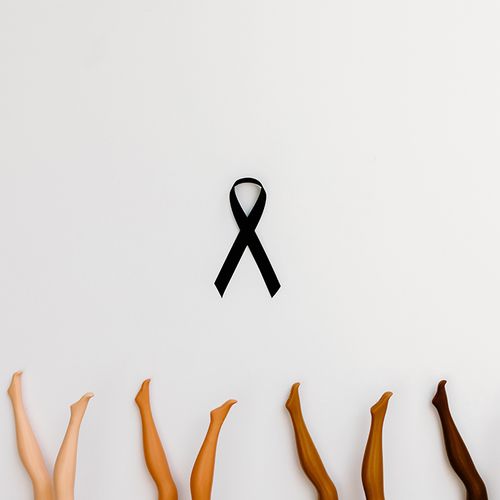Patients at high risk for melanoma benefit from a follow-up program that can detect the deadly skin cancer at an early stage, new research finds. A second study notes that embarrassment prevents some people from having a doctor examine their skin for suspicious lesions.
Both studies appear in the journal Archives of Dermatology.
People at high risk for melanoma, the most deadly form of skin cancer, include those with fair skin, blond or red hair, blue eyes, freckles and/or a family history of the disease, as well as those who have been exposed to artificial UV-A radiation or who have suffered severe sunburns, especially during childhood.
Study Details
The first study, conducted in Spain, included 40 melanoma patients who were in a special follow-up program designed for high-risk individuals, as well as 161 melanoma patients who were simply referred to another clinician in the same hospital. All the melanoma diagnoses were made using dermoscopy, a noninvasive microscopic evaluation of a skin lesion.
The researchers found that only 12% of melanomas diagnosed in the follow-up program fulfilled all four criteria for melanoma detection-asymmetry, uneven borders, colors and differential dermoscopic structures, compared with almost 64% of melanomas diagnosed in the doctor-referred group.
In addition, 70% of melanomas diagnosed in the follow-up group had not spread beyond the initial site, compared with about 28% of those in the referred group. Tumors also tended to be thinner in the follow-up group.
In the follow-up group, melanomas were diagnosed at the earliest stages: 70% at stage zero and 30% at stage IA. In the referral group, about 28% of melanomas were diagnosed at stage zero, 37.6% at stage IA, nearly 13% at stage IB, about 11% at stage II, 8.5% at stage III and 2.4% at stage IV.
Additional Research
The second study found that patient embarrassment, time constraints and other health conditions may prevent doctors from conducting regular full-body skin examinations of their patients.
It also found that dermatologists are much more likely than internists and family doctors to conduct these screenings for skin cancer.
Researchers analyzed survey responses from 679 dermatologists, 559 family practitioners (doctors specializing in family medicine) and 431 internists from across the United States. The results showed that regular full-body skin examinations of patients were conducted by 81.3% of dermatologists, compared with only 59.6% of family practitioners and 56.4% of internists.
The most common reasons for not performing this type of examination were patient embarrassment/reluctance, time constraints and other patient illnesses.
Time constraints were cited by 545% of internists and 54.4% of family practitioners, as compared with only about 31% of dermatologists. Patient embarrassment/reluctance was cited by about 44% of dermatologists, nearly 33% of internists and just over 31% of family practitioners.
Expert Reaction
"Patients who are at high risk, who fit this profile, should be routinely screened (for skin cancer) annually along with other surveillance measures for colon cancer, mammograms, etc.," advised dermatologist, Michele Green, MD, of Lenox Hill Hospital in New York City. She was not involved in the new research.
Identifying barriers to health-care screenings can help providers overcome them, said a team led by Susan A. Oliveria of Memorial Sloan-kettering Cancer Center, New York City.
Dr. Green agreed that the full-body skin exam should be a must for anyone at risk of skin cancer.
"I have one rule in my office. All new patients need to get undressed and have a full skin examination. It says it on the paperwork that patients read and sign at the time of the initial consultation," she said.
"These screenings will be incredibly productive and save lives if these subset of patients are screened on a regular basis," Dr. Green added.
